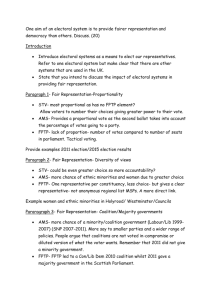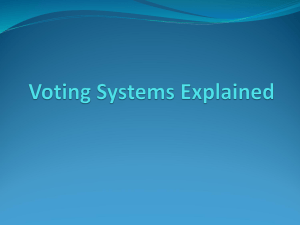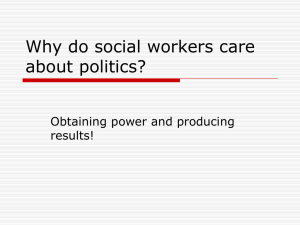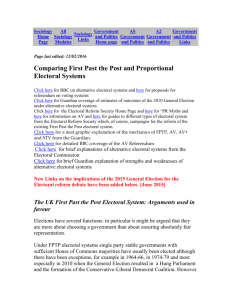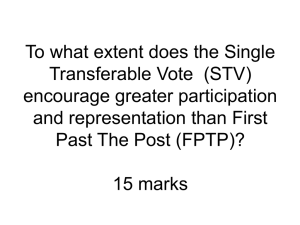Evaluation of Electoral Systems
advertisement
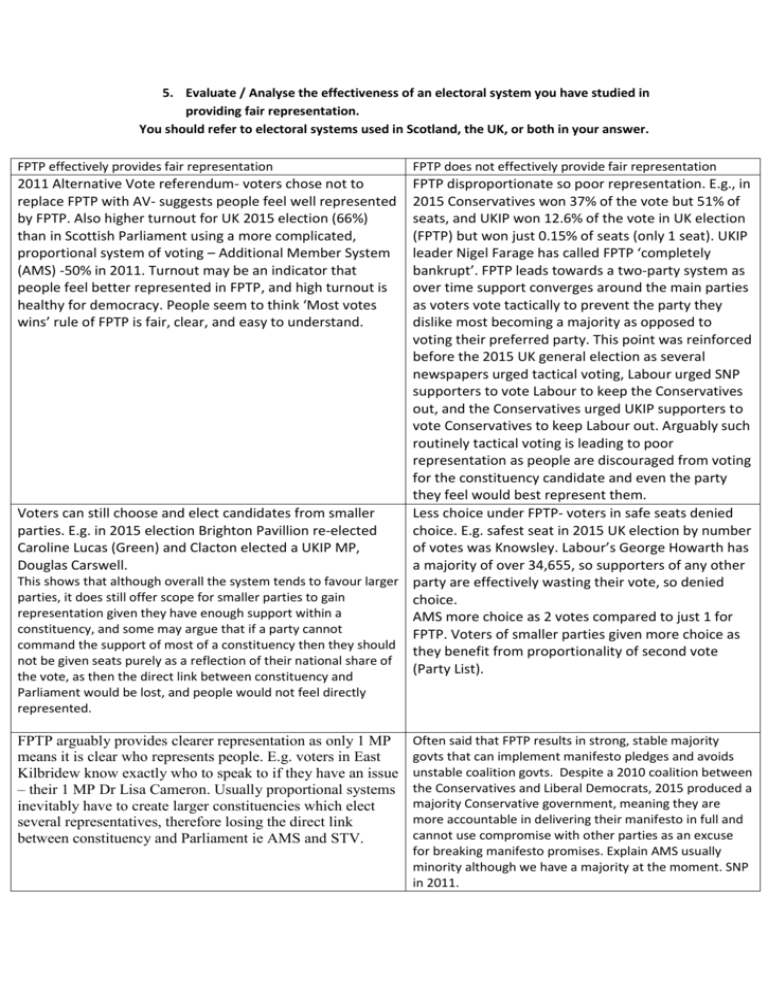
5. Evaluate / Analyse the effectiveness of an electoral system you have studied in providing fair representation. You should refer to electoral systems used in Scotland, the UK, or both in your answer. FPTP effectively provides fair representation FPTP does not effectively provide fair representation 2011 Alternative Vote referendum- voters chose not to replace FPTP with AV- suggests people feel well represented by FPTP. Also higher turnout for UK 2015 election (66%) than in Scottish Parliament using a more complicated, proportional system of voting – Additional Member System (AMS) -50% in 2011. Turnout may be an indicator that people feel better represented in FPTP, and high turnout is healthy for democracy. People seem to think ‘Most votes wins’ rule of FPTP is fair, clear, and easy to understand. FPTP disproportionate so poor representation. E.g., in 2015 Conservatives won 37% of the vote but 51% of seats, and UKIP won 12.6% of the vote in UK election (FPTP) but won just 0.15% of seats (only 1 seat). UKIP leader Nigel Farage has called FPTP ‘completely bankrupt’. FPTP leads towards a two-party system as over time support converges around the main parties as voters vote tactically to prevent the party they dislike most becoming a majority as opposed to voting their preferred party. This point was reinforced before the 2015 UK general election as several newspapers urged tactical voting, Labour urged SNP supporters to vote Labour to keep the Conservatives out, and the Conservatives urged UKIP supporters to vote Conservatives to keep Labour out. Arguably such routinely tactical voting is leading to poor representation as people are discouraged from voting for the constituency candidate and even the party they feel would best represent them. Voters can still choose and elect candidates from smaller Less choice under FPTP- voters in safe seats denied parties. E.g. in 2015 election Brighton Pavillion re-elected choice. E.g. safest seat in 2015 UK election by number Caroline Lucas (Green) and Clacton elected a UKIP MP, of votes was Knowsley. Labour’s George Howarth has Douglas Carswell. a majority of over 34,655, so supporters of any other This shows that although overall the system tends to favour larger party are effectively wasting their vote, so denied parties, it does still offer scope for smaller parties to gain choice. representation given they have enough support within a AMS more choice as 2 votes compared to just 1 for constituency, and some may argue that if a party cannot FPTP. Voters of smaller parties given more choice as command the support of most of a constituency then they should they benefit from proportionality of second vote not be given seats purely as a reflection of their national share of (Party List). the vote, as then the direct link between constituency and Parliament would be lost, and people would not feel directly represented. FPTP arguably provides clearer representation as only 1 MP means it is clear who represents people. E.g. voters in East Kilbridew know exactly who to speak to if they have an issue – their 1 MP Dr Lisa Cameron. Usually proportional systems inevitably have to create larger constituencies which elect several representatives, therefore losing the direct link between constituency and Parliament ie AMS and STV. Often said that FPTP results in strong, stable majority govts that can implement manifesto pledges and avoids unstable coalition govts. Despite a 2010 coalition between the Conservatives and Liberal Democrats, 2015 produced a majority Conservative government, meaning they are more accountable in delivering their manifesto in full and cannot use compromise with other parties as an excuse for breaking manifesto promises. Explain AMS usually minority although we have a majority at the moment. SNP in 2011.

